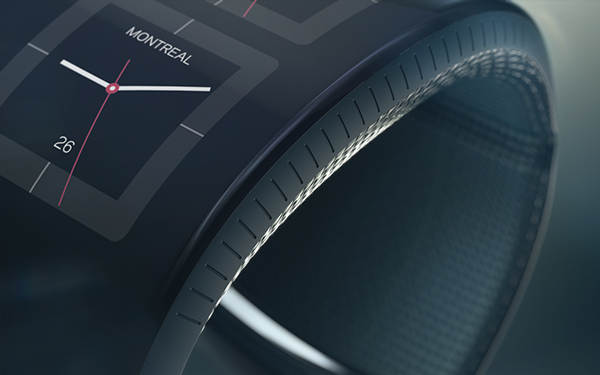It’s Wearables Wednesday here at Apple World Today, the day when I talk about the latest in the wearable technology — regardless of whether or not it’s from Apple. Wearables are an emerging market, so we’ll look at both what comes out from Apple, what works with our Apple devices, and even keep an eye on the competition.
Today I’m focusing on a rather interesting crowdfunding campaign called Neptune Suite. There’s no compatibility with Apple at all — it’s an Android-based system. So what makes the Neptune Suite worth bringing up on an Apple-centric website?
It’s the design. The Apple Watch is clearly designed as an accessory to an iPhone, with the smartphone providing the bulk of the brains in the duo. Not so with the Neptune Suite; it all revolves around the “watch” — AKA Neptune Hub — that you slide onto your wrist. The Hub is what the rest of the Suite uses for its brain power.
The Hub is a futuristically-designed cuff with a built-in 1.8 GHz quad-core processor, 64GB of storage and support for 3G/LTE, Wi-Fi, GPS, Bluetooth and NFC. Think of wrapping a much-miniaturized and battery-powered Mac mini around your wrist and adding a tiny display, and that’s the Hub.

Next, there’s the Neptune Necklace. It’s a fancy name for a pair of wireless headphones that use magnets in the earbuds to snap together, forming a “necklace” that you can wear around your neck until you feel like listening to music. No biggie there, wireless headphones are pretty common.
Let’s look at the next component of the Suite, the Pocket screen. It’s another interface for the Hub, with a 5-inch capacitive touchscreen and rear and front-facing cameras. It’s like a “dumb screen” using the Hub as brains, connected wirelessly.

As the infomercial pitchmen put it, “But wait, there’s more!” The Suite also includes the Tab screen, which looks like a 10-inch tablet and acts like one as well. It has a capacitive touchscreen and a front facing camera, but once again uses the Hub for processing.
Take the Tab screen and pair it with Neptune Keys, and now you have a laptop. But what if you want a bigger screen? That’s where the Neptune Dongle comes in; it’s a Chromecast-like HDMI dongle that turns a monitor or HDTV into another screen for the Hub. So with the Suite, you could use your Hub, Keys and Dongle to have a “laptop” with a 60-inch screen.

The advantages of using the Hub as the computing device are many. First, the Pocket and Tab screens use much less power since they don’t have any computing or connectivity components (except for one I’ll talk about in a minute). And since they don’t need space for those components, they can pack larger batteries. The one in the Pocket is 2,800 mAh and the Tab has a 7,000 mAh battery.
Both of those batteries can be used to top off the 1,000 mAh battery in the Hub, using the Necklace as a charging cable. See how this all works together? As for connectivity, the devices use a radically new wireless protocol called WiGig (802.11ad) to provide short-distance, high-speed wireless at up to 7 Gbps!
What’s pretty amazing is that the entire cost of the Suite, essentially wrapping a smartwatch, smartphone, tablet, laptop, TV streaming interface and headset, will be US$899. You can still get an early bird version for $599, with delivery expected a year from now.
While the Neptune Suite might not necessarily capture the attention of those of us who prefer our Apple devices, it does point toward a future Apple Watch that might very well provide more than just a wrist-borne screen and sensors.
Imagine buying a future MacBook that’s nothing more than a Retina display, keyboard, and battery with your Watch providing the processing. There’d be no need for an iPhone; you’d use your Watch to make calls. If you did want a larger screen for gaming or watching video, or perhaps for typing, you’d buy an iPhone or iPad-like display that’s mostly battery.
As the Neptune Suite becomes reality over the next year, we’ll keep a close eye on this unique take on an ecosystem of devices. Oh, and the crowdfunding campaign? With three weeks to go, it’s 914% funded… We are go for launch.
